Hamed Siamaki
Year of birth: 1991.
Where do you live: Isfahan/ Iran.
Describe your art in three words: Desert, installation art, photography.
Your discipline: installation art, photography, graphic design.
Website | Instagram
Your works are deeply connected to the desert. What does the desert represent for you, both personally and artistically?
The desert, for me personally, represents a confrontation with the essence of humanity, which is solitude. Solitude can be physical or emotional. What often torments us is physical loneliness, while emotional loneliness is entirely internal. I may be among friends and still feel lonely. Both forms of solitude occur simultaneously in the desert, creating a confrontation of me with myself. Physical solitude in the desert is about overcoming basic human challenges—what to eat, where to sleep, and so on. But emotional solitude pushes me towards inner reflection, questioning why I exist and what I must do. These are fundamental questions humanity has always asked from the dawn of understanding the world through philosophy and mysticism, yet none have fully answered such essential inquiries. Perhaps the cryptic nature of art, which sometimes happens unconsciously and sometimes consciously, can provide a clear path for humanity. And I explore this path of clarity in the desert.
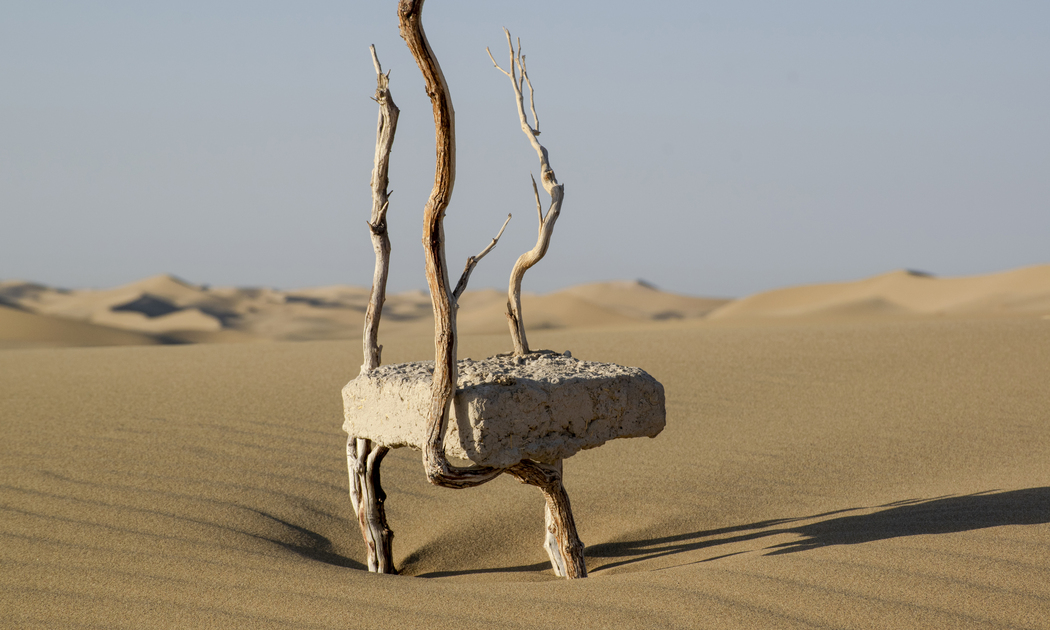 Hamed Siamaki | Hidden Presence 2 | 2021
Hamed Siamaki | Hidden Presence 2 | 2021
How do the local desert legends and stories influence your installation pieces?
The stories and legends of the desert’s marginalized inhabitants reflect their way of life in an arid climate, redefining human perseverance and inner beliefs. These tales carry lessons about the path of human truth upon this land. The selection of objects in my installations is rooted in those stories and the journey of truth, but in the installations, I no longer delve into the original narrative. Instead, it becomes a reinterpretation, a redefinition of the story as I perceive it. At times, my imaginings in an installation might be a personal narrative that I share with the audience. This imagination of mine may even resonate with the audience’s own mind.
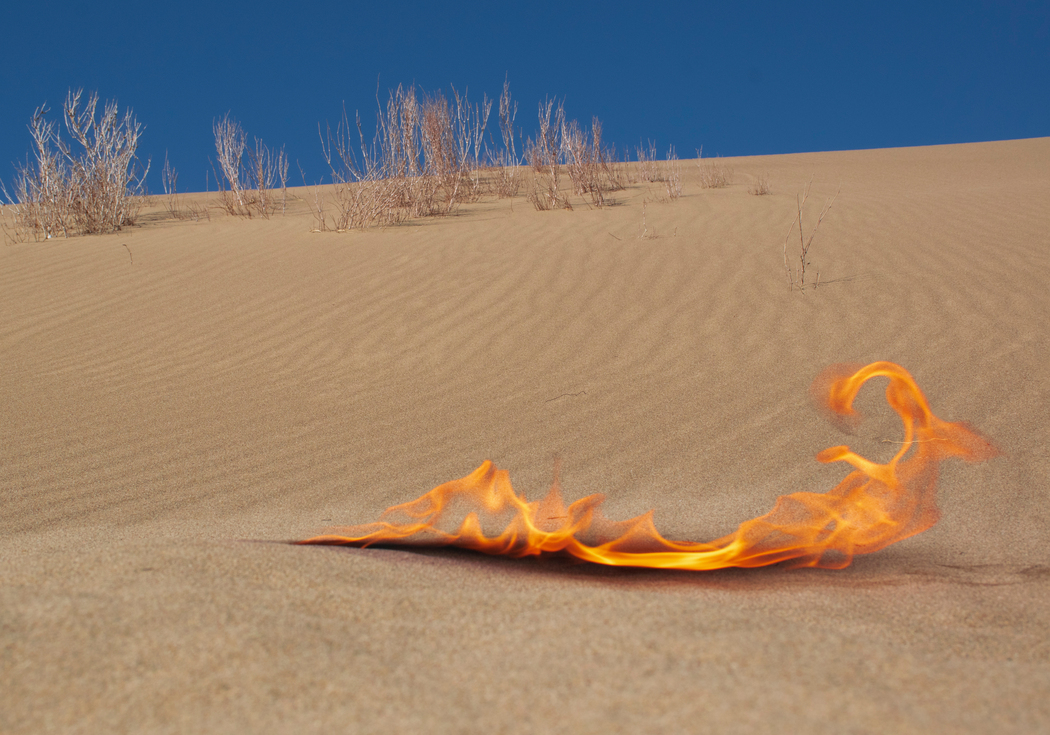 Hamed Siamaki | Apprehension | 2022
Hamed Siamaki | Apprehension | 2022
Could you describe the emotional and physical challenges you experience during your solo desert expeditions, and how they shape your art?
The desert and wilderness represent a true way of life for me. After two years of desert trekking, I turned to installation art, meaning I sought to express my personal insights from this landscape through installation. Sometimes, I find myself deeply influenced by my own installations, which eventually lead to environmental activism and campaigns to clean up the desert’s waste. The “Desert Giant” installation stands as proof of this.
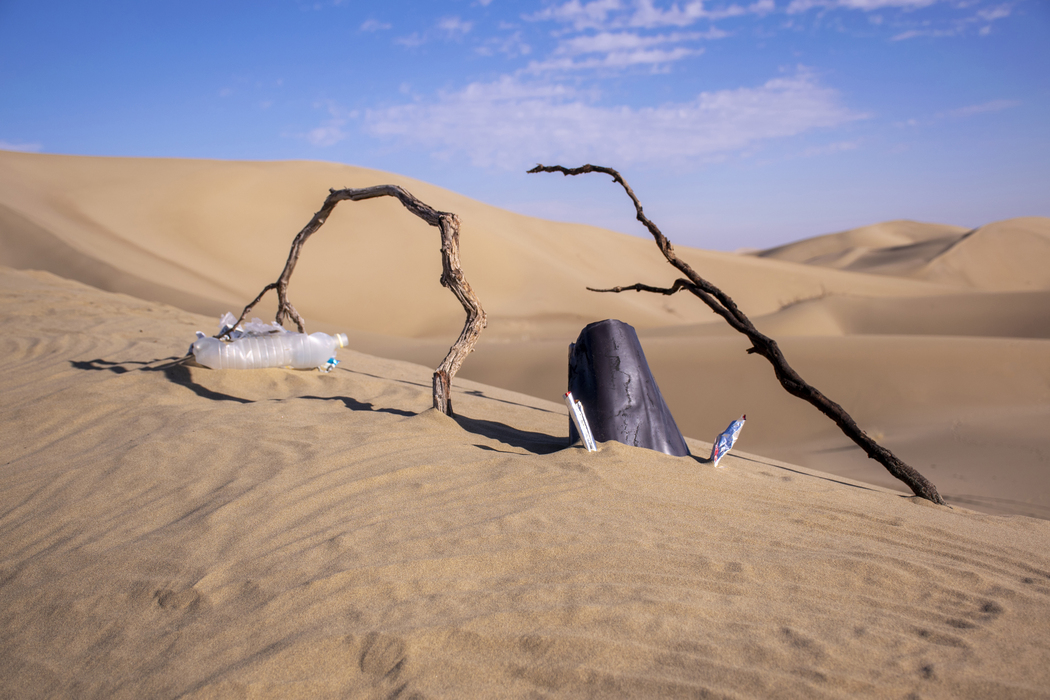 Hamed Siamaki | Desert Giant | 2023
Hamed Siamaki | Desert Giant | 2023
Many of your installations are created using natural materials and are left to the elements. How do you view the interaction between nature and your art over time?
Interacting with nature requires time. Our daily urban lives have separated us from nature, and at times, we are compelled to escape into nature to break away from the monotony. Whatever we give to nature, it eventually gives back to us. The desert is not devoid of life, though we mistakenly believe no living creatures inhabit it. In reality, the desert is a delicate and fragile ecosystem, and thus, it must be treated with care. My works are part of the desert ecosystem, so I don’t alter it but rather aim to explore and make use of it. If color is needed, it comes from mineral stones, and if plastic is involved, it comes from discarded waste, which I bring back with me in the end.
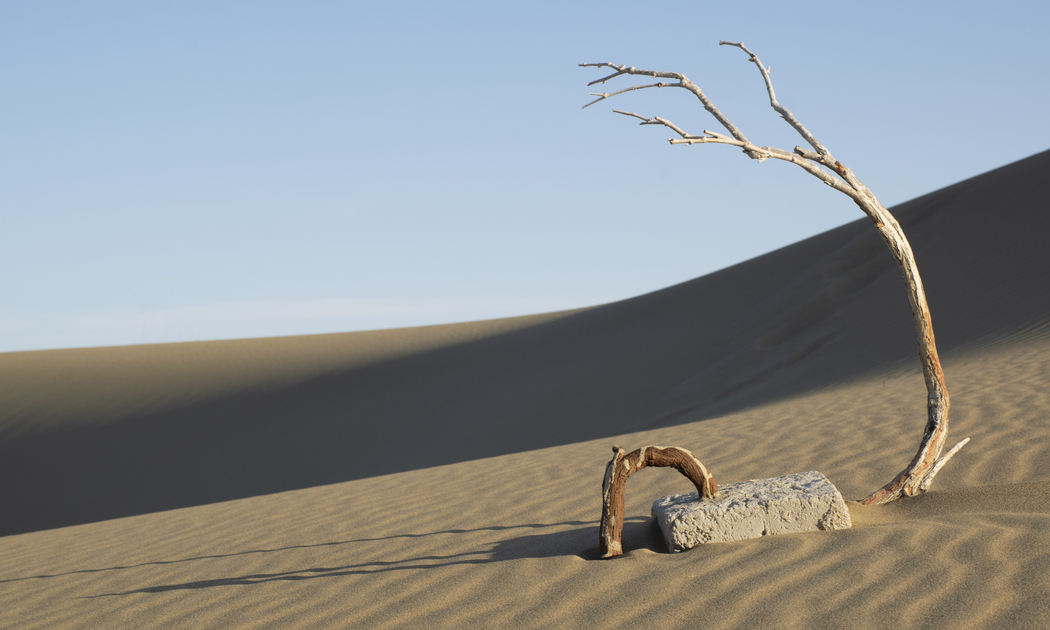 Hamed Siamaki | Hidden Presence 1 | 2021
Hamed Siamaki | Hidden Presence 1 | 2021
Your projects often explore themes such as human resilience and the fate of humankind. What conclusions, if any, have you drawn through your art about these themes?
Humans, like all other living beings and the Earth itself, are destined for destruction. However, human activities accelerate this process. What we are witnessing now are climate changes that have been intensified by human interference. Yet, throughout history, humanity has always found a way to survive, which reflects humanity’s ability to coexist under varying conditions.
How has your work in graphics and your role in the advertising industry influenced your installation practice?
My mind is trained in graphic design, which is why form and composition inevitably appear in my installation works. The choice of elements may also stem from this graphic mindset.
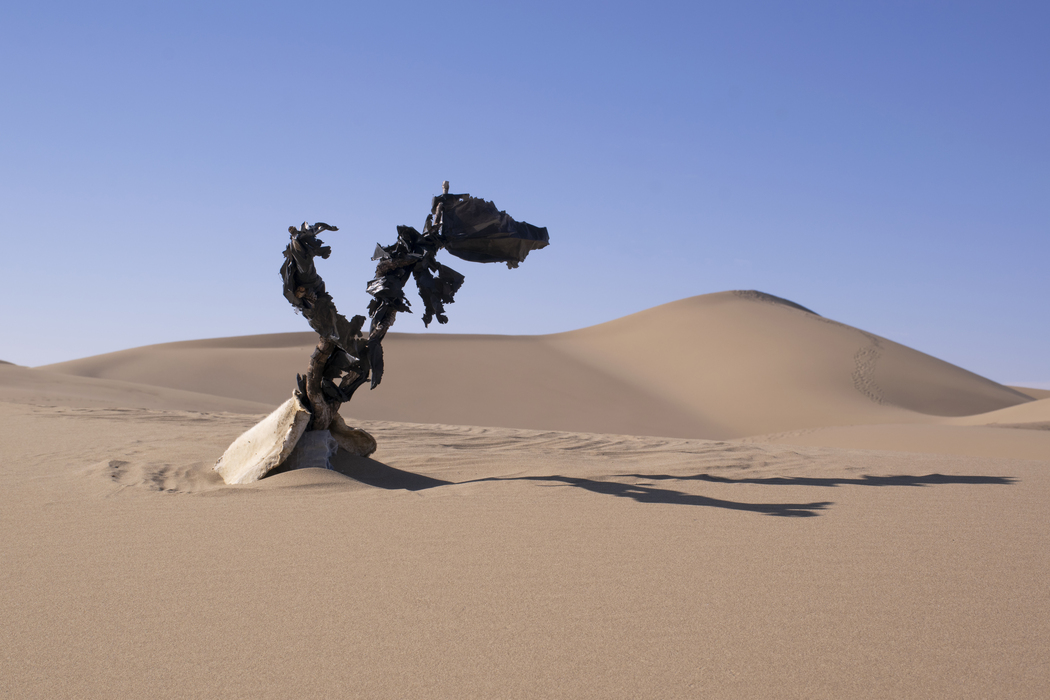 Hamed Siamaki | of Gavkhouni to Hawizeh Marshes | 2023
Hamed Siamaki | of Gavkhouni to Hawizeh Marshes | 2023
What do you hope viewers take away from experiencing your desert installations through photography?
There may be mental or experiential commonalities between me and the audience, but we’ve each viewed them from different perspectives. I aim to tell the audience, “You are not alone—look, I think this way too.”
And finally, I am eager to experience the approaches and perspectives of other cultures that live alongside the desert. I wish to live among them and discover new ways of thinking within their lands.

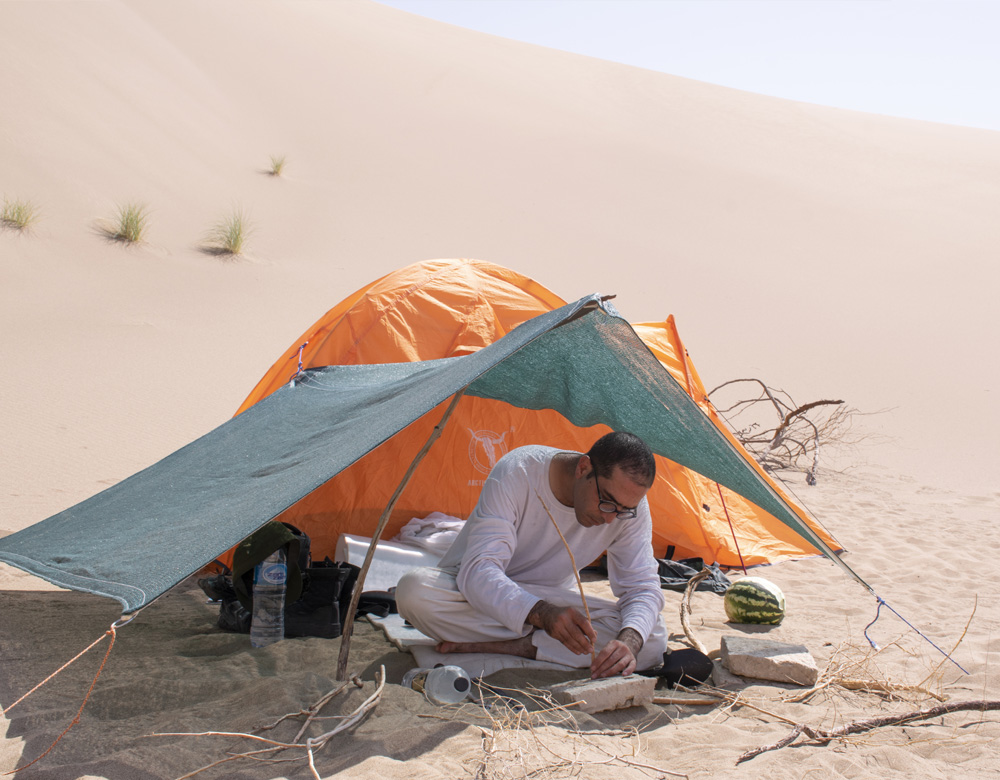
Leave a Reply
You must be logged in to post a comment.